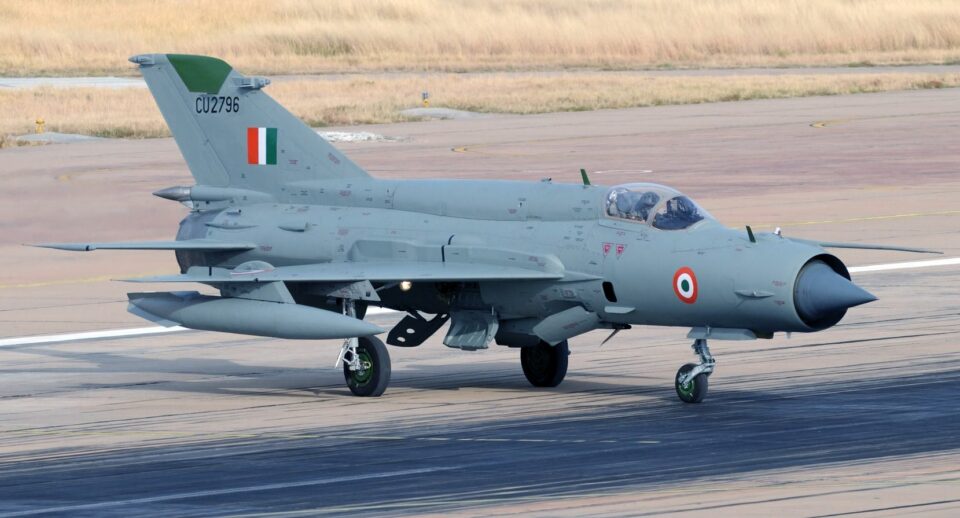Aerospace
How many MiG-21 jets are there in the IAF ? when will it be phased out
Here is details about how many MiG 21 fighters have crashed since they were first used by the Indian Air Force.

The fighter plane MiG 21 of the Indian Air Force crashed in Rajasthan, India, yesterday. There are no rumors building up or questions being directed at the Indian Air Force regarding the continued use of such aircraft in the air force despite their poor safety record and history of mishaps.
Is the MiG-21 a good plane?
The MiG-21 has been used by about 60 nations on four continents, and six decades after its debut flight, it is still in widespread use in many countries. The MiG 21 was created in the Soviet Union by Mikoyan Gurevich. It made its initial flight on June 16, 1955, and was later released as the MiG 21F for military use. As of right present, the Soviet, Indian, Croatian, and Romanian Air Forces are the four defenses operating this fighter plane. According to the source, 11,496 of this aircraft were built between 1959 and 1989, when it went out of production.
The McDonnell Douglas F-15 Eagle and General Dynamics F-16 Fighting Falcon have since surpassed it, making it the most-produced supersonic jet aircraft in aviation history, the most-produced combat aircraft since the Korean War, and the combat aircraft with the longest manufacturing run.
How many MiG-21 are there in Indian Air Force?
India is the country that uses the MiG 21 fighter the most. As opposed to the western fighter jets, India purchased the MIG 21 in 1961. The Soviet Union provided Indian technology and the right to assemble aircraft locally as part of the agreement.
More than 1200 MiG fighters have been introduced to the Indian military since 1963. India currently has 113 fighter aircraft in service. However, the aircraft has experienced numerous safety issues.
Why The Fighter Plane is Called ‘Flying coffins’?
Due to repeated crashes, this plane was also known as the widow maker and the flying coffins. The aircraft’s safety record was poor.
The fighter jet has earned the nickname “flying coffin” as a result of its frequent crashes. Due to the accidents, it is also referred to as the “widow-maker.” The aeroplane has recently had an extremely bad safety record.
This fighter plane has claimed the lives of more than 180 Indian pilots and 50 civilians since 1970. In the past 60 years, the Indian Air Force has lost around 400 MiG-21 aircraft in crashes.
What is the main contributor to MiG 21 fighter plane crashes ?
Older design components and compatibility have serious problems, and this plane’s engine design is also a significant problem. Even a small bird can cause an engine surge or seizure and flame out when the engine is in afterburner because it works so closely to its surge line. Predictive maintenance is difficult because the aircraft is almost 35 years old and is an old one.
What will happen to the MiG-21 fighter jet of the Indian Air Force?
The choice has been made by the Indian Defense department. The Indian Air Force (IAF) chose to retire one more squadron of the MiG-21 Bison aircraft by September 30 and the whole fleet by 2025 after the IAF fighter plane disaster claimed the lives of two pilots. The investigation into the accident’s cause was mandated by the court of inquiry.
The indigenous fighter jet Tejas aircraft was intended to replace the MiG 21 in a phase-out plan by the Defense Department. Thus, a plan will be put into action as soon as the aircraft are introduced to the squadron; by 2025, nearly all MiG 21 fighter jets will have been phased out of service. The IAF is also preparing a new fleet for the future, complete with upgraded features and armaments.

Aerospace
When Ratan Tata was denied entry to the airfield at the Aero India show, he waited

During our visit to Aero India 2019, we had the unexpected opportunity to see Ratan Tata at the event, which was a thrilling moment for us. However, there was a surprising hiccup when the security staff didn’t allow him to enter due to a lack of a security pass.
Despite this, he remained calm and patiently waited for about 20 minutes until a member of the Tata team brought him the required pass, after which he calmly proceeded inside. It was a humbling sight, showcasing his composed demeanor even in such situations.
Ratan Tata ji is not only a renowned industrialist but also a trained pilot, holding a pilot’s license. In 2007, he became the first Indian civilian to fly the F-16 Falcon during the Aero India show in Bangalore—a proud moment for the nation.
His passion for aviation extended beyond flying, as he played a key role in shaping India’s aerospace industry. Under his leadership, Tata ventured into manufacturing and maintaining aerospace components while upholding its legacy of quality. Notably, Tata’s collaboration with Airbus to develop and manufacture the C295 aircraft is a testament to its growing influence in the sector.
-

 Aviation2 months ago
Aviation2 months agoMicrosoft Flight Simulator Raises $3 Million to Bring Back the An-225 Mriya
-

 Airlines2 months ago
Airlines2 months agoQantas Engineers Stage Walkout Over Cost of Living Concerns
-

 Airlines2 months ago
Airlines2 months agoQatar Citizens Can Travel to the United States Without a Visa
-

 Aviation2 months ago
Aviation2 months agoQatar Airways bans these new Electronic Devices on plane
-

 Airlines2 months ago
Airlines2 months agoJapan Airlines Rolls Out Free Domestic Flights to International Passengers
-

 Defence2 months ago
Defence2 months agoWhich Country Has the Largest Fleet of Fighter Aircraft?
-

 Airport2 months ago
Airport2 months agoWestern Sydney Airport Welcomes Its First Plane After 6 Years of construction
-

 Aviation2 months ago
Aviation2 months agoDid you know ? Once Boeing 747 carried 1088 passenger in 1991








